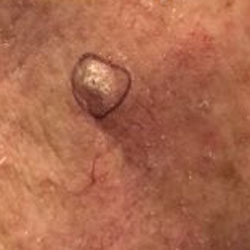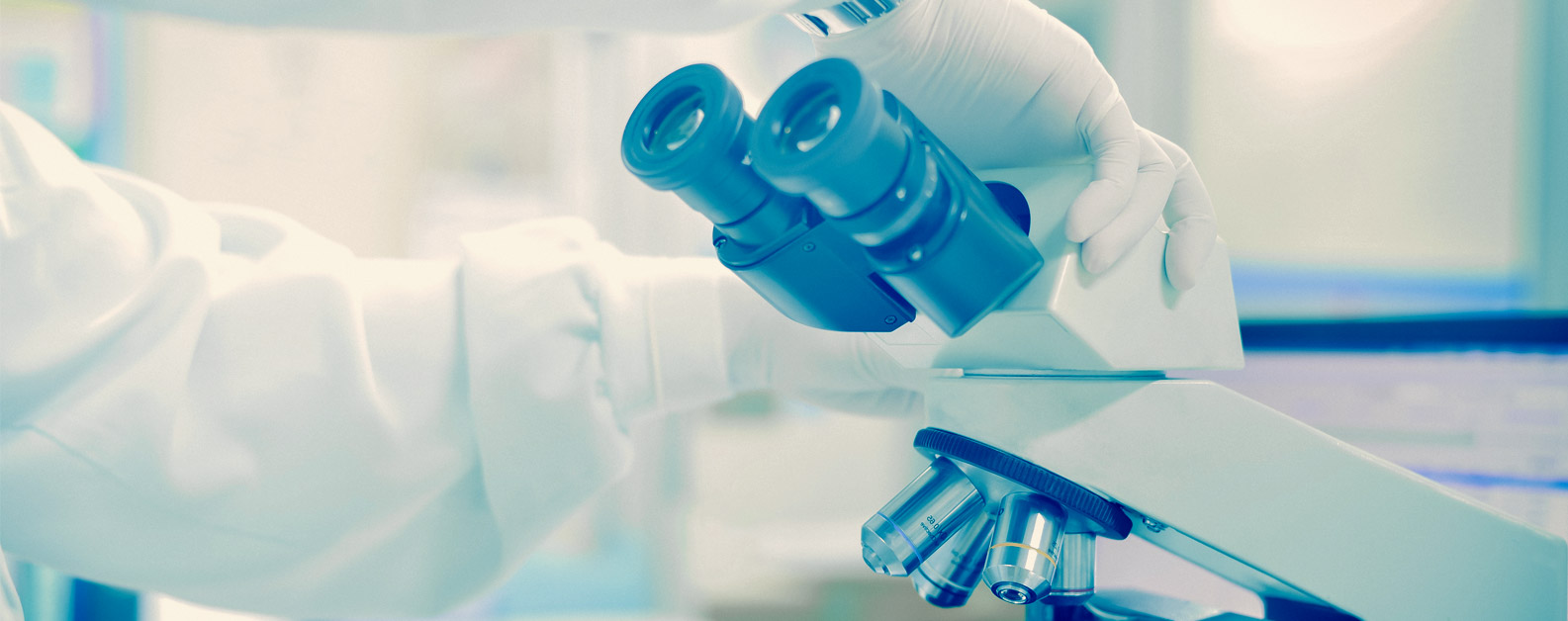Squamous Cell Carcinoma (SCC) is a type of non-melanoma skin cancer that originates from damaged cells in the top layer of the skin. It is the second most common type of skin cancer and is frequently seen on areas that receive the most sun exposure such as the ears, lips, face, arms, and legs. SCC can be aggressive and spread to other parts of the body so early diagnosis and treatment is important.
Risk Factors:
- Fair skin and light eyes
- A history of sun exposure
- A history of sun burns during childhood
- Tanning bed use
- Infection with Human Papilloma Virus (HPV)
- A history of receiving radiation
- Taking medications or having a condition that suppresses the immune system
Signs and Symptoms:
- Can begin as a red rough or scaly patch of skin called an actinic keratosis
- A wart-like growth
- An open sore
- A growth that bleeds, becomes inflamed, or grows rapidly

Diagnosis:
- SCC is diagnosed by removing a small sample of skin under local anesthetic and having it examined under a microscope by a dermatopathologist.
Treatment:
- Small growths on the arms, legs, back and chest can be either scraped out under local anesthetic (electrodesiccation and curettage) or removed with a surgical excision and the resulting wound sutured.
- Removal of larger skin cancers, those located on the head, neck, hands and feet, those that have been treated previously can be done with a procedure called Mohs micrographic surgery. Mohs surgery involves removing the tissue in layers and examining under a microscope at the time of surgery followed by a repair.
- Radiation is an option for patients with large SCC’s or for patients who aren’t good candidates for surgery. It may also be appropriate in certain locations where surgery is difficult to perform, such as the eyelids.
- High risk squamous cell carcinomas may also be treated with adjuvant oral chemotherapy called 5-Fluorouracil or epidermal growth factor inhibitors.
Course and Prognosis:
- In contrast to Basal Cell Carcinoma (BCC), which rarely spreads (metastasizes), 2-5% of SCC can metastasize to local lymph nodes.
- Squamous cell carcinoma detected early and treated promptly is almost always curable with very little damage to the surrounding skin and tissues.
- Larger and deeper SCC’s require more extensive treatment, which can be cosmetically disfiguring.
- If left untreated, SCC can destroy the surrounding skin and tissue underneath, invade nerves, and spread to local lymph nodes.
- Mohs surgery is the standard of treatment for many SCC’s due to the technique’s ability to preserve the most normal tissue and examine all of the tumor margins at the time of the procedure. Mohs can have up to a 99% cure rate if the skin cancer hasn’t been treated previously.
- If an SCC is removed with surgical excision cure rates are approximately 95%. The cure rate drops to 77% if the skin cancer has been treated previously.
- Electrodessication and curretage (which is typically reserved for small cancers on the arms, legs, chest, and back) can be up to 96% effective.
- Patients who develop a squamous cell carcinoma are at a 40% increased risk for developing another SCC within 2 years.
- A full body skin examination should be performed every 6-12 months to monitor for any skin cancer recurrence, help prevent future skin cancer, and monitor for the development of any new skin cancers.

